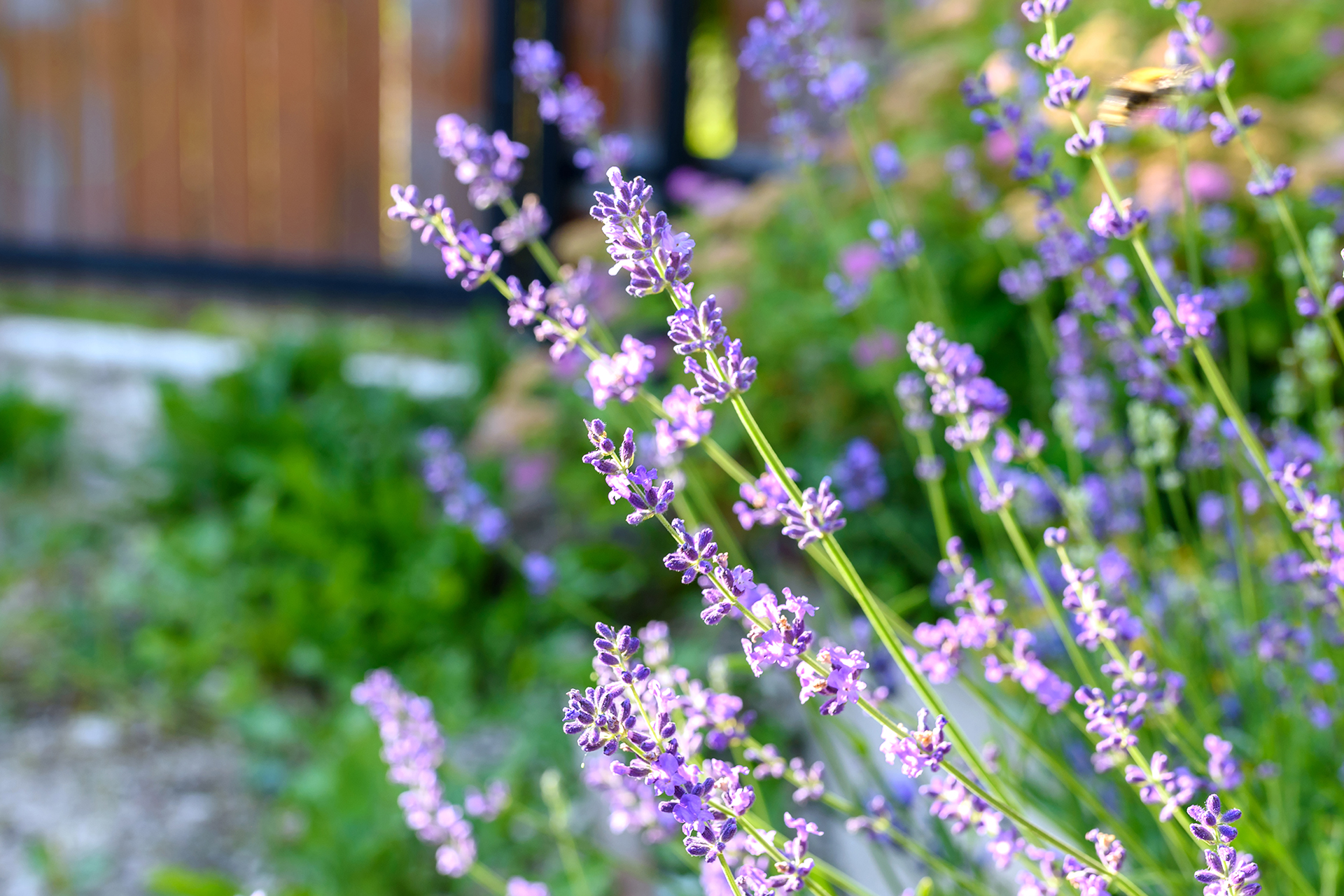When to harvest lavender – for the best fragrance and blooms
Find out when to harvest lavender and how to make this seasonal beauty last longer


Knowing when to harvest lavender is all about timing. Whether you prefer your lavender plants mauve, pink or white, and French or English, the sight and smell of these enchanting blooms, alive with bees and butterflies, is one of the year’s real high points.
If you grow lavender, you can savor this moment by learning when to cut and gather in the flowers. It also helps to know exactly how you wish to use the plant overall, as this will impact on when to pick, too. Harvest lavender for extracting the essentials oil, using the tiny blooms in baking, and drying stems to use around the home or to create homespun decorations.
Whatever you decide, knowing when to plant lavender and later keeping a close eye on developing blooms and the weather conditions can make a huge difference to your crop, its lasting fragrance and how well it stores.
Below, we provide all the details you need on when to harvest lavender.
When to harvest lavender
‘Lavender is such an uplifting plant, there’s a sort for every type of garden,’ says Richard Norris, director and founder of Long Barn Lavender.
Harvesting lavender is one of life’s simple pleasures. Flushed with heady fragrance and brimming with essential oils, the mass of tiny flowers is a joy to behold and they are impressively potent for their size.
But whether you are snipping them to dry and use in the home, for their oil, crafting or cooking projects or simply to look after your plants and boost next year’s performance, timing the cut is worth getting right.
Design expertise in your inbox – from inspiring decorating ideas and beautiful celebrity homes to practical gardening advice and shopping round-ups.
Be mindful that being savvy about how to prune lavender is also key. ‘Annual pruning will improve flowering and prevent them from becoming woody. Prune immediately after flowering. Remove shoots to within around 1in (2cm) of previous year’s growth,’ says Sarah Raven.
When to cut lavender to bring into the home
If you love the look of lavender in your yard and borders, then it makes sense to enjoy every last glimpse of those deep purple and white blooms, but if you are planning to put these perfume-filled flowers to good use, then you need to plan wisely.
Amelia Powell Baggett of Pelindaba Lavender advises, ‘If you plan on cooking with lavender, harvest when just a few of the buds have opened. For fragrance or crafting, wait until most of the buds have opened.’
When is the best time to harvest lavender for its oil?
Like the idea of extracting lavender oil from your crop for its exquisite scent? Then timing the harvest correctly can have a huge impact on its resulting quality and quantity.
Rather cutting when just a few of the blooms have opened, wait until all are in full color or where some are starting to fade. This stage signifies that the oils have reached their peak and are ready for distilling.
When is it too late to harvest lavender?
When it is too late to harvest lavender really depends on what exactly you want from your fragrant crop. If you wish to process the flowers in some way, then they need to be either open or just going over.
If you are looking to keep the plant in best condition for a healthy display of blooms and foliage the following year, then wait until after flowering and snip each stem back to create a dome like mound. With sharp snips or secateurs, cut back the soft, leafy growth to 2 to 3in (5 to 6 cm) above where it meets the older hardwood. This will promote strong regrowth.
One word of warning, though: don’t cut lavender back in prolonged wet, damp weather or late in the season when colder temperatures have set in as this can make the plant more susceptible to disease.

Journalist Jill Morgan has spent over 20 years writing and editing gardening, interior and property features. Titles she has worked on include The English Home, House Beautiful, Ideal Home, Houzz and Modern Gardens and she writes regularly for H&G as a Contributing Editor. Whilst she is a dab hand at renovation projects and DIY, she is happiest when out digging in the garden or planning a new border.